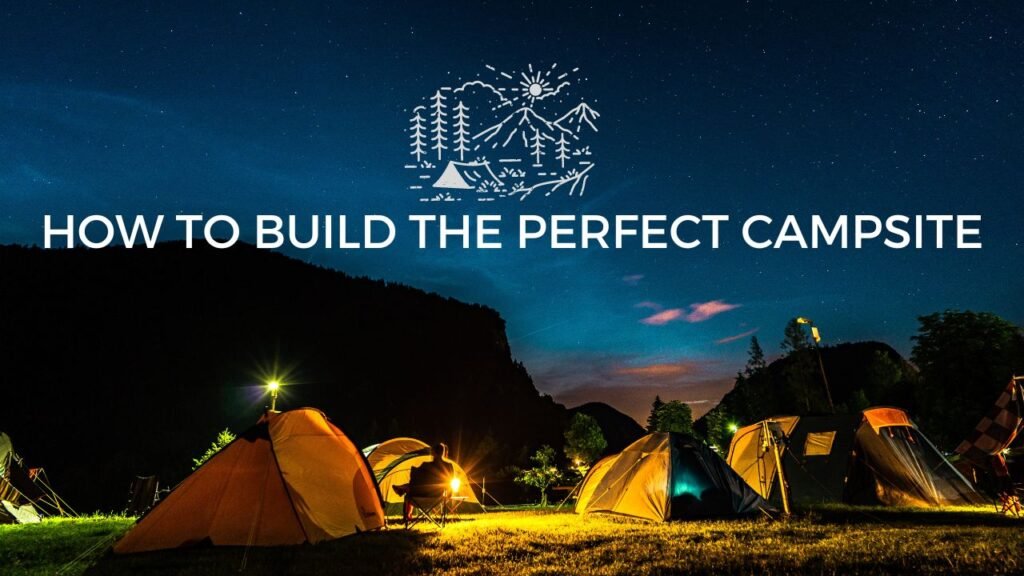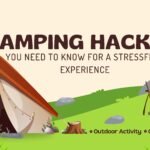Camping is one of the best ways to connect with nature, unwind, and escape the hustle of everyday life. But to truly enjoy your outdoor experience, setting up a campsite that balances comfort and functionality is crucial. Whether you’re a seasoned camper or new to the adventure, building the perfect campsite involves careful planning, the right gear, and a few insider tips. In this guide, we’ll walk you through every step to ensure your campsite is as cozy and practical as your home away from home.
1. Choosing the Right Location
The foundation of a great campsite starts with the perfect location. Here’s what to consider:
- Flat Ground: Look for level terrain to pitch your tent. This ensures comfortable sleeping and reduces the risk of rolling off your sleeping pad.
- Proximity to Water: Being close to a water source is convenient for cooking, cleaning, and drinking, but not too close—stay at least 200 feet away to avoid bugs and potential flooding.
- Natural Windbreaks: Use natural features like trees or rock formations to protect against wind. This helps keep your tent stable and reduces noise.
- Sunlight and Shade: Assess the sun’s path; you’ll want morning sun to warm you up but some shade in the afternoon to stay cool.
- Avoid Hazards: Stay clear of dead trees (widow-makers), low-lying areas that might flood, and regions with animal activity.
2. Setting Up Shelter: The Tent and Sleeping Area
Your tent is your main shelter, so setting it up correctly is key to comfort and safety.
- Tent Selection: Choose a tent suitable for the weather and number of campers. A three-season tent is versatile, while a four-season tent offers more protection in extreme conditions.
- Footprint and Rainfly: Use a footprint to protect the tent floor from punctures and moisture. Always secure the rainfly, even if the weather seems clear—unexpected rain can quickly dampen your spirits.
- Tent Pitching Tips: Pitch your tent with the door facing away from the wind. Stake down all corners and guy lines to ensure stability.
- Sleeping Setup: Invest in a quality sleeping pad or air mattress for insulation and comfort. Pair it with a sleeping bag rated for the temperature you’ll be camping in. A camping pillow or a stuff sack filled with clothes can provide neck support.
3. Organizing the Campsite: Layout for Functionality
A well-organized campsite makes everything from cooking to relaxing more enjoyable.
- Designate Zones: Create specific areas for sleeping, cooking, and relaxing. This helps keep your campsite orderly and minimizes mess.
- Cooking Area: Set up your kitchen downwind from your tent and at least 100 feet away to avoid attracting wildlife. Use a camp stove on a flat surface, and keep fuel and matches safely stored.
- Fire Pit: If campfires are allowed, use established fire rings. Always have water or a shovel nearby to extinguish the fire completely before bed or when leaving the site.
- Trash Management: Bring plenty of trash bags and store them securely to avoid attracting animals. Follow Leave No Trace principles by packing out all waste.
4. Comfort Essentials: Furniture and Lighting
Adding comfort to your campsite makes a world of difference in your overall experience.
- Seating: Foldable camping chairs or a portable hammock can provide comfort and relaxation. Look for lightweight, sturdy options that are easy to pack.
- Table: A compact camping table is perfect for meal prep and dining. Choose one that is easy to set up and wipe down.
- Lighting: Headlamps are essential for hands-free lighting, but adding lanterns or string lights can create a cozy atmosphere. Opt for solar or battery-powered lights to avoid dealing with fuel.
5. Food and Water Management: Safe and Practical Tips
Eating well while camping doesn’t have to be complicated.
- Meal Planning: Pre-plan meals and prepare ingredients at home. Use resealable bags to portion out spices, oils, and other small items.
- Storage: Keep food in airtight containers or bear-proof canisters, and store them at least 100 feet from your sleeping area.
- Cooking Gear: Bring lightweight cookware that suits your needs. A compact stove, nesting pots, and multi-purpose utensils can save space and weight.
- Water Filtration: If you’re near a natural water source, carry a water filter or purification tablets. Always have a backup method, such as boiling, to ensure water safety.
6. Staying Safe: First Aid and Wildlife Awareness
Safety is paramount, especially in the wild.
- First Aid Kit: Pack a comprehensive first aid kit tailored to your group size and activity level. Include bandages, antiseptics, tweezers, and any personal medications.
- Wildlife Awareness: Store food properly and follow all local guidelines to avoid encounters with wildlife. Learn about the animals in your area and how to react if you encounter them.
- Weather Preparedness: Check the forecast before you leave and pack accordingly. Bring layers for temperature changes and rain gear for unexpected showers.
7. Entertainment and Relaxation: Make It Fun!
Camping is also about enjoying downtime. Bring activities that everyone will enjoy.
- Games and Books: Pack lightweight games like cards or a small board game. A good book or journal can be perfect for some quiet time.
- Outdoor Activities: Plan hikes, fishing, or star-gazing. Bring binoculars, a camera, or a guidebook to enhance your outdoor exploration.
8. Packing Up: Leave No Trace
Leaving your campsite in pristine condition is not just courteous—it’s essential.
- Clean Up Thoroughly: Pack out all trash, leftover food, and litter. Leave the area as you found it, or better.
- Dismantle Fire Pits: If you made a temporary fire pit, dismantle it and scatter cool ashes. Fill in any holes or trenches.
- Check for Gear: Double-check your site for any forgotten gear, and ensure all personal items are accounted for.
Final Thoughts
Building the perfect campsite is all about balancing comfort and functionality. By choosing the right location, organizing your setup thoughtfully, and prioritizing safety, you can create a camping experience that’s both enjoyable and memorable. Remember to prepare, plan, and always respect nature, ensuring that your outdoor adventures are not only fun but also sustainable for future generations.
Happy camping!



